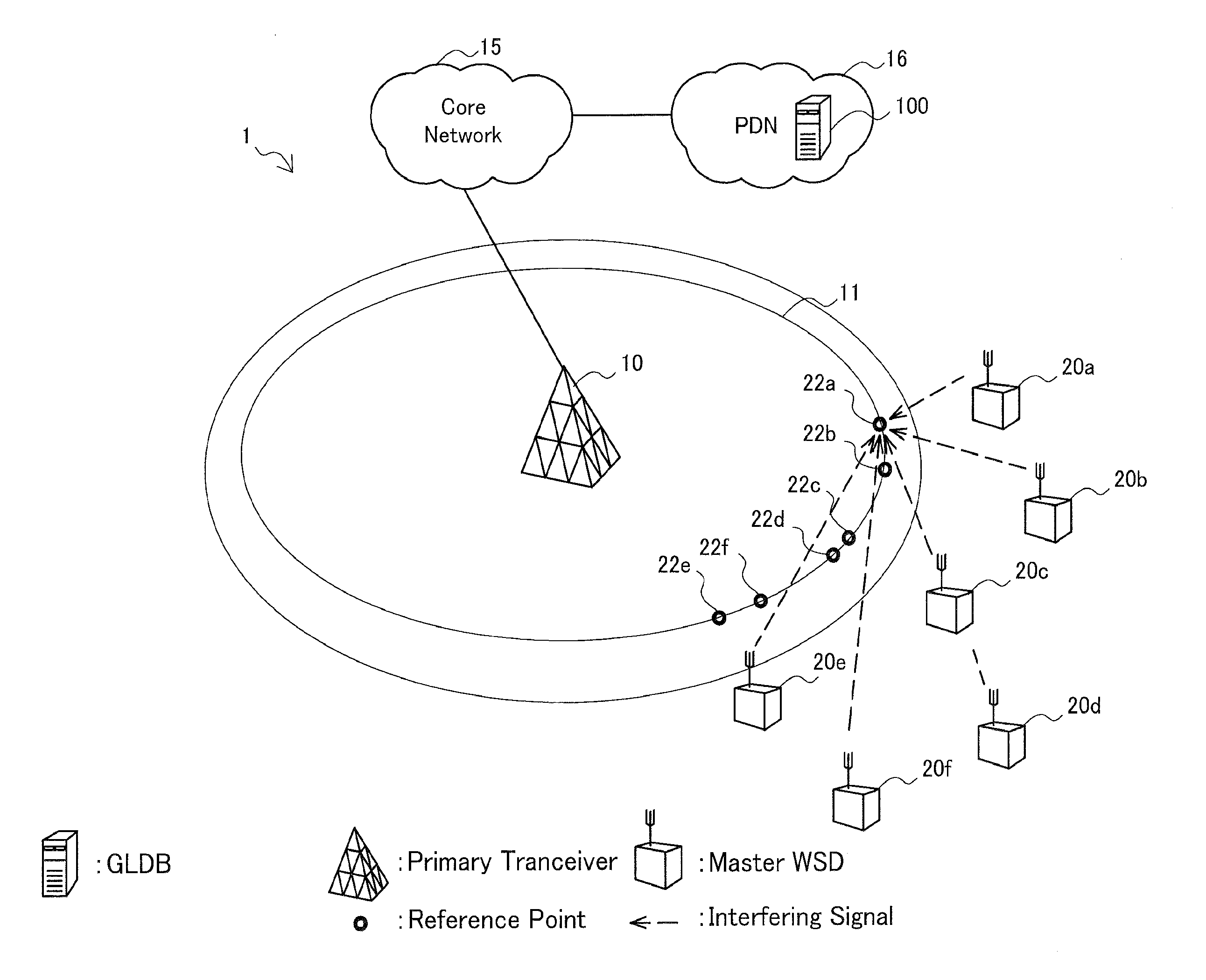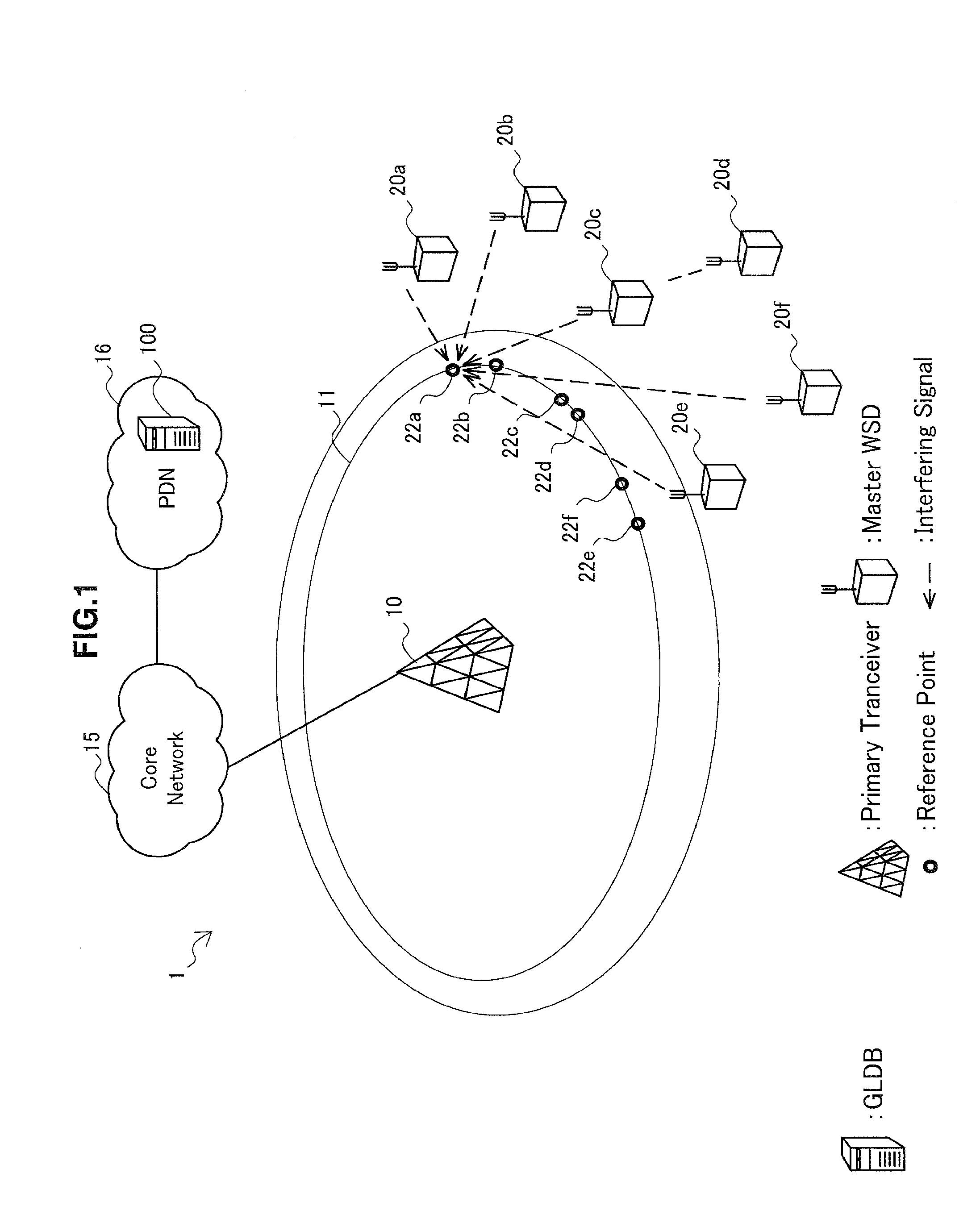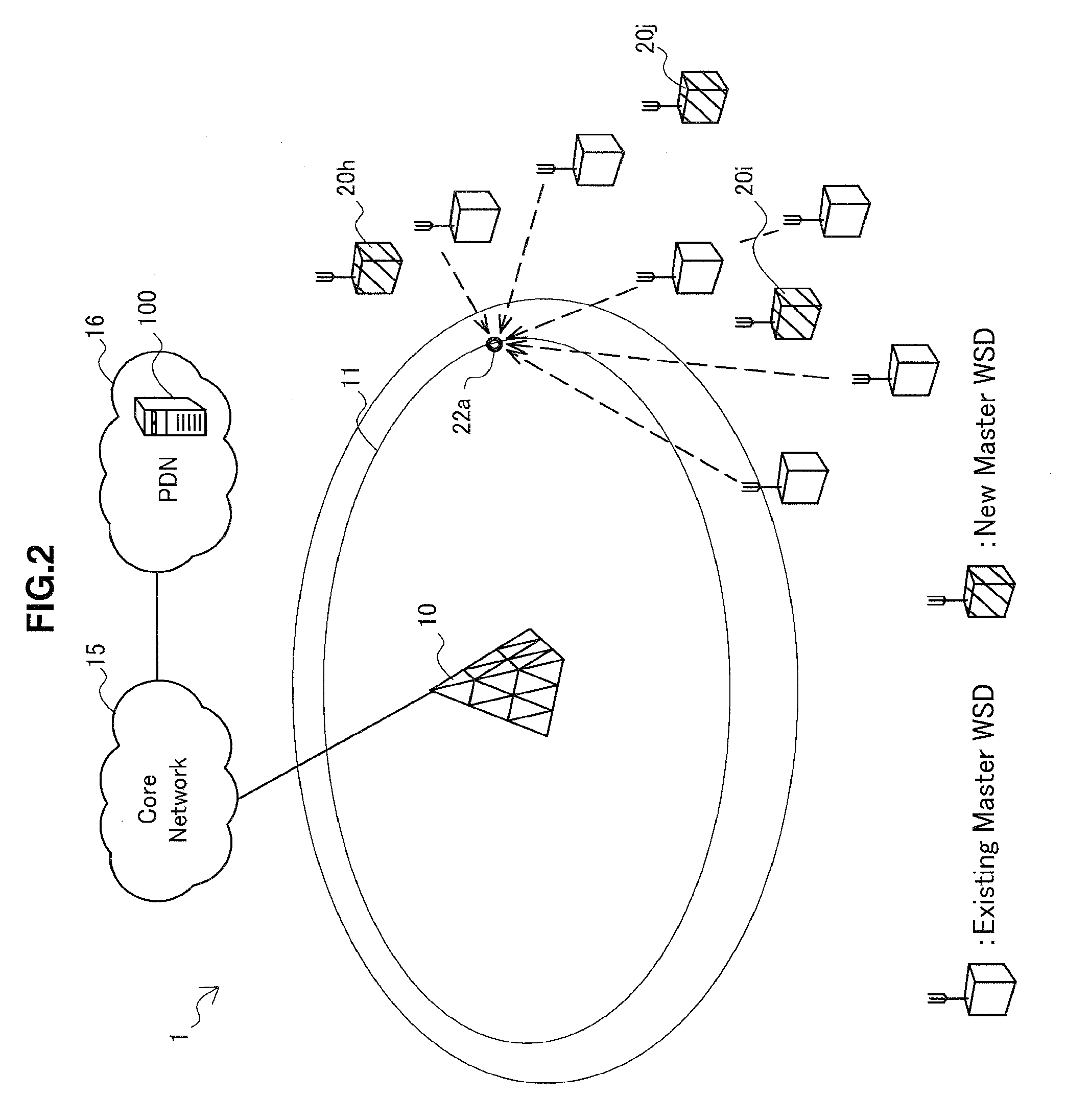Communication control apparatus and wireless communication apparatus
a control apparatus and wireless communication technology, applied in the direction of transmission monitoring, wireless commuication services, power management, etc., can solve the problems of increasing the calculation cost, affecting the validity of control, so as to prevent harmful interference. the effect of prevention
- Summary
- Abstract
- Description
- Claims
- Application Information
AI Technical Summary
Benefits of technology
Problems solved by technology
Method used
Image
Examples
first example
(1) First Example
[0164]FIG. 7A is a flowchart illustrating a first example of the flow of a power distribution process according to an embodiment. In the first example, the time at which the transmit power was recalculated last by the calculation unit 134 is treated as the base point in time for the variation in the number of secondary systems.
[0165]Referring to FIG. 7A, first, the determination unit 132 stands by a change in the number of secondary systems (step S110). Subsequently, when the number of secondary systems changes, the process proceeds to step S115.
[0166]Next, the determination unit 132 determines whether the changed number of secondary systems (NWSD+NWSD_VAR) exceeds the determination threshold NTH (step S115). If the changed number of secondary systems does not exceed the determination threshold, the process proceeds to step S120. On the other hand, if the changed number of secondary systems exceeds the determination threshold, the process proceeds to step S140.
[0167...
second example
(2) Second Example
[0171]FIG. 7B is a flowchart illustrating a second example of the flow of a power distribution process according to an embodiment. In the second example, the immediately previous time at which the transmit power was recalculated or adjusted is treated as the base point in time for the variation in the number of secondary systems. Also, the determination threshold NTH is configured dynamically. Note that the configuration is not limited to such an example, and the determination threshold NTH may be configured dynamically in the first example, or the determination threshold NTH may be configured statically in advance in the second example.
[0172]Referring to FIG. 7B, first, the determination unit 132 configures the determination threshold NTH according to a processing condition such as the load imposed on the processing resources of the communication control apparatus 100 or the number of processor cores available for use (step S105). Also, the determination unit 132 ...
third example
(3) Third Example
[0178]FIG. 7C is a flowchart illustrating a third example of the flow of a power distribution process according to an embodiment. In the third example, the time at which the transmit power was recalculated last by the calculation unit 334 is treated as the base point in time for the variation in the number of secondary systems, similarly to the first example. In the third example, the technique of reducing signaling overhead described as the first modification in the previous section is introduced.
[0179]Referring to FIG. 7C, first, the determination unit 132 stands by a change in the number of secondary systems (step S110). Subsequently, when the number of secondary systems changes, the process proceeds to step S115.
[0180]Next, the determination unit 132 determines whether the changed number of secondary systems exceeds the determination threshold (step S115). If the changed number of secondary systems does not exceed the determination threshold, the process proceed...
PUM
 Login to View More
Login to View More Abstract
Description
Claims
Application Information
 Login to View More
Login to View More - R&D
- Intellectual Property
- Life Sciences
- Materials
- Tech Scout
- Unparalleled Data Quality
- Higher Quality Content
- 60% Fewer Hallucinations
Browse by: Latest US Patents, China's latest patents, Technical Efficacy Thesaurus, Application Domain, Technology Topic, Popular Technical Reports.
© 2025 PatSnap. All rights reserved.Legal|Privacy policy|Modern Slavery Act Transparency Statement|Sitemap|About US| Contact US: help@patsnap.com



